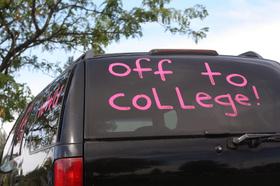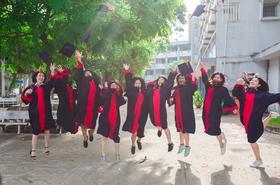School Highlights
Miller-Motte College-Wilmington serves 672 students (97% of students are full-time).
The college's student-teacher ratio of 4:1 is lower than the state community college average of 13:1.
Minority enrollment is 63% of the student body (majority Black), which is more than the state average of 48%.
Quick Facts (2025-26)
- Enrollment: 672 students
- Private-state tuition: $10,485
- Acceptance Rate: 67%
- Student-teacher ratio: 4:1
- Minority enrollment: 63%
- Source: Integrated Postsecondary Education Data System (IPEDS)
School Overview
The teacher population of 179 teachers has stayed relatively flat over five years.
Miller-Motte College-Wilmington
(NC) Community College Avg.
Carnegie Classification
Baccalaureate/Associate's Colleges: Mixed Baccalaureate/Associate's
Associate's Colleges: Mixed Transfer/Career & Technical-High Nontraditional
Institution Level
Four or more years
At least 2 but less than 4 years
Institution Control
Private for-profit
Public
Total Faculty
179 staff
256 staff
Number of Programs Offered
4
68
Student Body
The student population of Miller-Motte College-Wilmington has declined by 72% over five years.
The student-teacher ratio of 4:1 has decreased from 14:1 over five years.
The Miller-Motte College-Wilmington diversity score of 0.68 is more than the state average of 0.66. The school's diversity has grown by 26% over five years.
Total Enrollment
672 students
2,579 students
Student-Teacher Ratio
4:1
13:1
# Full-Time Students
653 students
766 students
# Part-Time Students
19 students
1,813 students
# Enrollment Undergraduate
672 students
316 students
# Full-Time Undergraduate Students
653 students
766 students
# Full-Time Graduate Students
n/a
22 students
# Part-Time Undergraduate Students
19 students
1,990 students
# Part-Time Graduate Students
n/a
3 students
Total Dormitory Capacity
n/a
717 students
% American Indian/Alaskan
2%
1%
% Asian
n/a
3%
% Hispanic
8%
13%
% Black
39%
21%
% White
37%
52%
% Hawaiian
n/a
1%
% Two or more races
13%
3%
% Non Resident races
n/a
1%
% Unknown races
1%
5%
Diversity Score
0.68
0.66
College Completion Rate (Students who graduate in less than 4 years)
n/a
37%
College Completion Rate (Students who graduate in 4 years or more than 4 years)
16%
43%
Average Graduate Earnings (10 Years)
$25,100
$27,500
Tuition and Acceptance Rate
The private state tuition of $10,485 is less than the state average of $19,438. The private state tuition has stayed relatively flat over four years.
Private State Tuition Fees
$10,485
$19,438
% Students Receiving Some Financial Aid
85%
82%
Median Debt for Graduates
$14,000
$11,865
Median Debt for Dropouts
$6,334
$5,846
Acceptance Rate
67%
53%
SAT Reading
n/a
488
SAT Math
n/a
498
ACT Composite
n/a
20
ACT English
n/a
13
ACT Math
n/a
16
Source: 2024 (or latest year available) Integrated Postsecondary Education Data System (IPEDS)
Frequently Asked Questions
How much does Miller-Motte College-Wilmington cost?
Miller-Motte College-Wilmington's private state tuition is approximately $10,485.
What schools are Miller-Motte College-Wilmington often compared to?
Miller-Motte College-Wilmingtonis often viewed alongside schools like Cape Fear Community College by visitors of our site.
What is the acceptance rate of Miller-Motte College-Wilmington?
The acceptance rate of Miller-Motte College-Wilmington is 67%, which is higher than the state average of 53%.
All school names are trademarks and/or registered trademarks of their respective holders. This school is not affiliated with Community College Review and has not endorsed, approved or sponsored this website or directory listing in any manner.
Recent Articles

The Rise of Technical and Vocational Training in 2025
Explore the 2025 surge in technical and vocational training—enrollment, policy, costs, and why this path is gaining ground for students and parents.

Stackable Credentials: How Community Colleges Advance Careers
Discover how community colleges use stackable credentials to build career pathways, boost earnings, and enable lifelong learning in 2025.

High-Paying Jobs You Can Get with a Community College Degree
Discover top high-paying careers you can launch in 2025 with a community college (associate) degree and high-growth credentials in tech, healthcare and trades.






